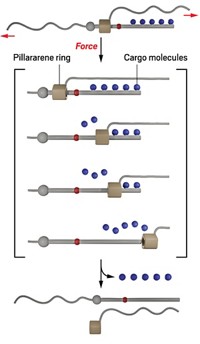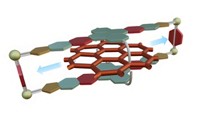Advertisement
Grab your lab coat. Let's get started
Welcome!
Welcome!
Create an account below to get 6 C&EN articles per month, receive newsletters and more - all free.
It seems this is your first time logging in online. Please enter the following information to continue.
As an ACS member you automatically get access to this site. All we need is few more details to create your reading experience.
Not you? Sign in with a different account.
Not you? Sign in with a different account.
ERROR 1
ERROR 1
ERROR 2
ERROR 2
ERROR 2
ERROR 2
ERROR 2
Password and Confirm password must match.
If you have an ACS member number, please enter it here so we can link this account to your membership. (optional)
ERROR 2
ACS values your privacy. By submitting your information, you are gaining access to C&EN and subscribing to our weekly newsletter. We use the information you provide to make your reading experience better, and we will never sell your data to third party members.
Biomaterials
Polymer tracks and peptide sliders speed up reactions
Cargo-toting sliders move reactants by sliding and hopping along individual tracks and between neighboring ones
by Celia Henry Arnaud
January 24, 2019
| A version of this story appeared in
Volume 97, Issue 4

Biological enzymes don’t wait to bump into their targets inside of cells but make quick chemical work by sliding and hopping around on their DNA and RNA substrates. Now a team led by Wilhelm T. S. Huck of Radboud University has used a similar strategy to speed up reactions in a synthetic system. The researchers devised a system of oppositely charged polymer tracks and cargo-carrying sliders for bringing reactants together (Nat. Chem. 2019, DOI: 10.1038/s41557-018-0204-7).
The researchers made two types of cationic tracks and two types of anionic sliders and tested them in combination. The tracks were made of polyarginine or polylysine, and the sliders were coenzyme A or short peptides containing one, three, or five glutamic acids. The sliders, which bind to the tracks via electrostatic interactions, can slide or hop from one region to another along an individual track or hop from one track to another.
As sliders move along, they can grab chemical cargo using a thiol group and deposit it in chemical receptacles at the end of the track. For example, Huck’s team used sliders to pick up acetyl groups from the ends of so-called donor tracks via a reversible thioester exchange reaction. The acylated sliders then hopped and slid their way to another track with a reactive chain end, to which the cargo attaches via an irreversible reaction. The slider is then free to go through the cycle again.
This system of donor and receiver tracks, paired with sliding carriers, speeds up reactions by orders of magnitude in a way that’s analogous to catalysis, Huck says. “In traditional catalysis, you lower the activation energy to speed up the reaction. In this case, you increase the collision rate of the molecules,” he says.
The tracks are flexible enough to form loops, and sliders can move easily from one loop to another or between nearby tracks. “That’s how you get a combination of 1-D sliding and 3-D hopping,” Huck says.
The work “generalizes ideas around facilitated diffusion of biomolecules to a fully synthetic context,” says Paul Blainey, an expert on DNA–protein interactions at the Broad Institute of MIT and Harvard. Accelerating reactions by confining them is likely to be useful in a variety of applications, Blainey says.
Hagan Bayley, an expert on molecular transport at the University of Oxford, points out that the sliding of molecules along polymers has been studied in other contexts. However, he notes, the new work involves “a considerably simplified system that will be amenable to further diversification and to detailed mechanistic analysis, with potential implications for catalysis in aqueous media.”
Huck and coworkers plan to expand the kinds of reactions they can carry out using such a system. “We would like to see this as a way of making smart materials that can respond to the environment,” Huck says.





Join the conversation
Contact the reporter
Submit a Letter to the Editor for publication
Engage with us on Twitter